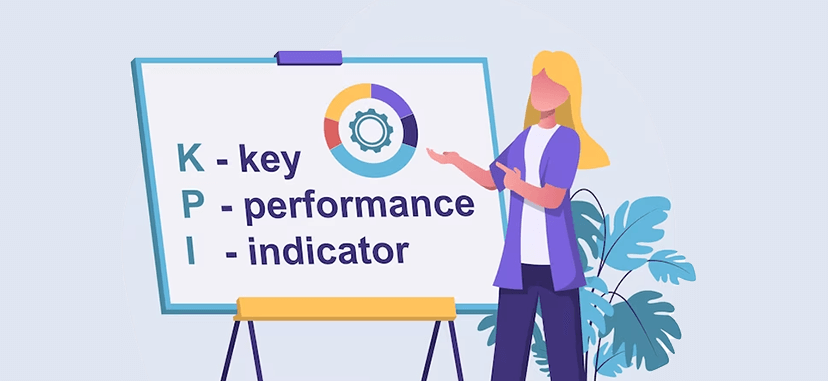
Click the button to start reading
From Planning to Execution: A Complete Guide to Marketing Campaign Management Mastery
In today’s fast-paced marketing landscape, businesses face numerous challenges in managing their marketing campaigns.
Feeling overwhelmed by coordinating multi-channel campaigns, grappling with effective data usage, or lacking a well-defined strategy and goals is not uncommon. If you’re nodding in agreement, rest assured that you’re not alone.
Fortunately, there’s a way to bring clarity and structure to your marketing campaign management.
This detailed guide is meant to help you figure out how to run a marketing campaign by giving you tips and strategies that you can use right away.
With the right approach, you’ll soon be able to change the way you do marketing and get the results you’ve always wanted. So, let’s delve into the captivating world of marketing campaign management mastery.

Part 1: A Step-by-Step Guide to Creating Data-Driven Marketing Campaigns
Ready to dive into the exciting world of data-driven marketing campaigns? In this engaging and informative section, we’ll guide you through the essential steps to creating campaigns that captivate your audience and drive meaningful results. Let’s begin!
Step 1: Define Your Campaign Goals and Objectives
Lay the groundwork for a successful marketing campaign by setting SMART goals (Specific, Measurable, Achievable, Relevant, and Time-bound) based on data insights. This approach ensures your objectives are clear, focused, and grounded in meaningful data.
For example, a SMART goal might be:
- Specific: Increase newsletter sign-ups by 25%.
- Measurable: Track the number of new subscribers monthly.
- Achievable: Implement a new sign-up form and create a lead magnet.
- Relevant: Newsletter sign-ups help grow your email list, allowing for targeted marketing efforts.
- Time-bound: Achieve the goal within three months.
Step 2: Identify and Analyze Your Target Audience
Harness data to create detailed customer personas that help you better understand your audience’s needs, preferences, and pain points.
By doing so, you can tailor your campaigns to resonate effectively with your target audience. To find your target audience, consider:
- Analyzing marketing insights in Google Analytics or Facebook Insights.
- Conduct surveys or interviews with your current customers.
- Researching industry trends and competitors’ target audiences.
Step 3: Choose the Right Channels and Platforms
With a data-driven approach, you can decide which channels and platforms to use for your campaigns in a smart way. For example, Instagram and Pinterest might be good for campaigns that focus on acquiring customers, while LinkedIn and Twitter might be better for professional networking and thought leadership.
Consider factors like audience demographics, engagement levels, and the type of content best suited to each channel to maximize your marketing efforts’ impact.
Step 4: Craft Compelling and Relevant Content
Use data to personalize your content and increase engagement. Analyze your audience’s preferences, online behavior, and past interactions with your brand to create content that resonates with them, driving better results and fostering stronger connections.
Stay current with the latest trends in copywriting, such as crafting relatable messaging that speaks to your audience’s needs and emotions. Exercise caution, as sending the wrong message to the wrong audience can lead to negative consequences, like alienating potential customers or damaging your brand’s reputation.
Step 5: Measure and Optimize Campaign Performance
Regularly track and evaluate your campaign’s performance using data analytics. Identify areas for improvement and adjust your strategies accordingly.
Focus on measuring key performance indicators (KPIs) that align with your business goals. Some examples of KPIs include:
- Conversion rate
- Click-through rate
- Cost per acquisition
- Return on ad spend
- Engagement rate
By staying vigilant and data-focused, you can ensure continuous growth and progress in your marketing campaigns.

Part 2: The Future of Marketing Campaign Management
Well, the future is upon us, and it looks bright! As technologies evolve, AI and predictive analytics are being used to analyze data in real time and make decisions about marketing campaigns quickly and accurately.
This allows marketers to stay up-to-date on their target audience’s ever-changing preferences and identify new opportunities for growth.
As the marketing world continues to change quickly, it’s important to stay on top of new trends and use new technologies to stay ahead of the competition. In this section, we’ll explore some exciting predictions and trends shaping the future of marketing campaign management, with a particular focus on the role of artificial intelligence (AI).
Predictions and Trends: Technology and Innovation in Marketing Campaign Management
The world of marketing is constantly being reshaped by advances in technology and innovation. Here are some trends that you should keep an eye on as they will likely have a significant impact on marketing campaign management:
- Personalization at scale: As data collection and analysis become more sophisticated, businesses will be able to deliver hyper-personalized experiences to their customers, even in large-scale campaigns.
- Omnichannel marketing: Brands will need to provide seamless, consistent experiences across all channels and platforms to meet the expectations of today’s consumers.
- Data privacy and security: As concerns about data privacy grow, marketers will need to adapt their strategies to ensure compliance with regulations while still leveraging data-driven insights.
The Role of AI in Marketing Campaign Management
AI is about to change the way marketing campaigns are run. It will help marketers make better decisions, speed up processes, and give their audiences more engaging experiences. Let’s dive into some of the ways AI is already making an impact:
AI Language Models: GPT-4 and Beyond
AI language models like GPT-4 are getting more and more complex, which could change the way content is made and optimized. These models can make high-quality text that sounds like it was written by a person.
This lets marketers create more engaging and relevant content at scale. In addition, AI-generated content can be tailored to specific audiences, further enhancing personalization efforts.
Advanced-Data Analysis with AI
AI-powered tools for analyzing data can help marketers find valuable insights, spot patterns, and make more accurate predictions about future trends.
By using these insights, marketers can make better choices about campaign strategies, who to target, and what to say. This leads to better campaigns and better results.
Best and Worst-Case Scenarios
AI holds enormous potential for marketing campaign management, but it’s crucial to consider both the best and worst-case scenarios when incorporating AI into your strategies:
- Best case: AI tools can help you streamline your marketing processes, optimize your campaigns, and deliver personalized experiences at scale, leading to increased engagement and better overall results.
- Worst case: Over-reliance on AI could lead to a loss of human touch, making it difficult for brands to build authentic connections with their audiences. Additionally, AI-generated content could be perceived as less genuine, potentially harming your brand’s reputation.
To navigate these potential pitfalls, it’s essential to strike the right balance between leveraging AI and maintaining a human touch in your marketing campaigns. By doing so, you can harness the power of AI while still fostering authentic connections with your audience.

Part 3 Tips for Integrated Campaign Management and Workflow Optimization
The secret to effectively managing integrated marketing campaigns across multiple channels and platforms lies in finding the right balance and workflow. Explore some tips and best practices to streamline your marketing campaign management process.
Develop a Centralized Strategy
Having a centralized strategy ensures your marketing efforts remain cohesive across all channels. Make a marketing plan that includes your goals, your target audience, your message, and the platforms you’ll use to reach them.
Utilize Marketing Automation Tools
Marketing automation tools can be game-changers for managing multiple campaigns across various platforms. They help schedule and automate repetitive tasks, such as social media posting, email marketing, and ad placement, freeing up more time to focus on strategy and analysis.
Establish Clear Communication and Collaboration
For integrated campaign management to work, your team needs to be able to talk to each other freely and work together. Share your marketing plans, goals, and progress with your team to ensure everyone is on the same page and working together towards the same objectives.
Monitor and Adjust Your Campaigns Regularly
Stay agile and ready to adjust your marketing campaigns as needed. Reviewing the performance data of your campaigns on a regular basis lets you find places to improve and make quick changes, which keeps your marketing efforts effective and efficient.
By following these best practices, you’ll be well on your way to optimizing your marketing campaign management workflow, which will lead to better results and more efficient use of resources.

Part 4: Measuring Success and Identifying Key Performance Indicators (KPIs)
To really master marketing campaign management, you need to set up a way to measure success and keep track of the right key performance indicators (KPIs). By focusing on the most important metrics, you can make good decisions and keep getting better at marketing.
Determine Your Success Metrics
Start by identifying what success looks like for your specific campaigns. This will depend on your goals, such as raising brand awareness, getting more people to visit your website, getting more leads, or making more sales.
Choose the Right KPIs
Choose the KPIs that fit with the goals of your campaign and give you useful information about your marketing efforts. Here are some examples of KPIs to consider:
- Website traffic: Monitor the number of visitors, page views, and unique visits to measure the reach and engagement of your online presence.
- Conversion rate: Analyze the percentage of visitors who complete a desired action, like signing up for a newsletter, downloading a resource, or making a purchase.
- Cost per acquisition (CPA): Calculate the average cost of acquiring a new customer or lead through your marketing efforts.
- Return on investment (ROI): Assess the effectiveness of your marketing campaigns by comparing the revenue generated to the total cost of your marketing efforts.
- Social media engagement: Track likes, shares, comments, and followers to gauge the success of your social media campaigns.
Continuously Evaluate and Optimize
Monitor your KPIs and use the data to evaluate the performance of your marketing campaigns. Find places where you can make improvements and adjust your plans to make the most of your success and reach your goals.
Focusing on the right key performance indicators (KPIs) and constantly evaluating your marketing efforts will help you make decisions based on data and improve the performance of your campaigns over time.

Part 5: Adapting Your Marketing Campaigns to Changing Times
Change is inevitable. To stay ahead and stay ahead of the competition, it’s important to keep changing your marketing campaigns to keep up with new trends, new technologies, and changing consumer tastes.
Stay Informed on Industry Trends
Keep yourself informed about the latest industry trends, news, and best practices by following reputable sources, attending conferences, and participating in online forums. By staying up to date on what’s happening in your field, you’ll be better equipped to adapt your marketing strategies to evolving circumstances.
Embrace New Technologies
Incorporate new technologies and tools into your marketing campaigns to streamline processes, improve efficiency, and enhance the overall effectiveness of your efforts. Keep an eye on emerging platforms and technologies that can help you reach your target audience and achieve your goals more effectively.
Regularly Evaluate Your Target Audience
Your target audience’s preferences and needs can change over time. Regularly evaluate your customer data to identify any shifts in demographics, interests, and behaviors. Use this information to refine your marketing campaigns and ensure you’re consistently reaching and engaging with your audience.
Foster Agility and Flexibility
Cultivate an agile and flexible mindset, both individually and within your marketing team. This will enable you to pivot your strategies quickly in response to changes in the market or your industry. Encourage open communication and collaboration among team members to foster innovation and adaptability.
By staying informed, embracing new technologies, evaluating your target audience, and fostering agility, you’ll be better prepared to adapt your marketing campaigns to the ever-changing landscape and continue driving success for your business.
Conclusion: The Path to Marketing Campaign Management Mastery
Are you ready to master the art of marketing campaign management? By understanding and applying the key trends, technologies, strategies, and best practices discussed in this article, you’ll be well on your way to creating effective marketing campaigns.
To summarize, focus on:
- Embracing AI and data analytics for informed decision-making
- Discovering new opportunities and optimizing campaigns
- Evaluating your performance and learning from mistakes
- Adopting a flexible mindset and adapting strategies as needed
It’s time to take action and apply these principles to your own marketing campaigns. In doing so, you’ll not only stay ahead of the competition but also build a solid foundation for long-term success.
As you embark on this journey, stay persistent, innovative, and open to new ideas, and you’ll no doubt achieve marketing campaign management mastery.
















